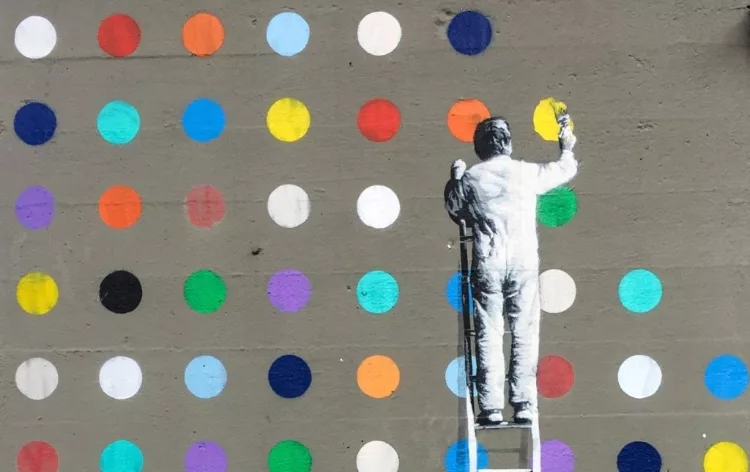Difference between DPI and PPI
by Anthony Clark
Ever heard of the terms PPI and DPI? Well, the term flies around so much a lot of people misunderstand its meaning.
If you are into producing high-quality photos and digital images or plan to be, it is important to understand the true meaning of the acronyms PPI and DPI. In this post, we will clear any misconceptions you might have heard about the abbreviations.
Contents
Knowing the meaning and difference between the two acronyms also means you don't get ripped off by a printer when they turn in shabby works.
PPI vs. DPI

Both acronyms describe image and photo resolution in photography. But it's not the same thing. To get you started, we will state the full meaning of the acronyms, then give a detailed explanation of what they mean.
DPI : Dots Per Inch
DPI is an acronym for Dots Per Inch. It is the term used to refer to the tiny dots of ink and the density of the dots in an image when it is printed on paper or other photographic media. It gives one an idea of the resolution of a printer.
All printers have different resolutions. Hence, when they print, the quality of the image varies from printer to printer. The key thing to note here is that DPI does not relate to how an image looks on a screen. It only refers to the quality of the image printed on paper or any other photographic medium.

Inkjet printers are popular photo printers. They can print in color as well as in black and white. A standard inkjet printer is capable of printing in at least 300 dpi. This resolution is enough to create a decent-looking image.
Now, you understand what DPI means right?
PPI : Pixels per inch
PPI is the abbreviation of Pixels per Inch. It refers to the resolution of a digital image on a screen i.e. image or photo that is not yet printed. They allow resizing of images and photos before printing them out. To truly understand this, you need to understand what pixel means.
Pixel is a picture element and it refers to the smallest building block that makes up an image on a screen. Unlike DPI that are tiny dots, pixels are squares and come in various sizes. They are arranged in grid form and each square represents a unique hue or color.
The design of a screen determines its pixel quality. Now, we have screens that can display images in as high as 4K, High Definition (HD, QHD, and Ultra-HD (UHD). The demand for such screens is also becoming increasingly popular.
To improve the quality of the image on a screen, all you have to do is reduce its size to sharpen it. By doing this, you are forcing more pixels into the grid shape.
NOTE: The size of a digital image or photo file depends on its resolution. Photos with low resolution tend to have smaller sizes than photos with high resolution.
What is the best resolution for printing?
To be honest, there is no "best resolution" for printing. Any decent printer or graphics designer would tell you that much.
The important thing to know here is that the resolution you print in depends on several factors.
For one, resolution depends on how big the image would be when you eventually print it on paper, canvas, or photographic medium. For instance, standard billboards usually have a resolution between 20-50 dpi. Yes, this is low but it is also because the intended audience won't be viewing it up close enough to notice the large dots that make up the image. Instead, they will view the billboard from a distance.
Another factor that influences resolution is the type of paper, canvas, or photographic medium being used. Is it a coated paper or glossy paper? Is it the regular office printing paper?
You might also want to consider what the print is for. That is, whether you want to use the print for advertisement, artwork, or for business.
These are just some of the things you need to consider to know the true resolution that is perfect for that printing work.
That said, you should know that print quality depends on your printer's dots per inch (dpi) while the image quality displayed on your screen depends on a pixel per inch (PPI).
To get high-quality prints, you need to use premium inkjet and Lasers printers. Hence, you don't just need to have a super sharp image on your monitor's screen. A printer that can only print in 600 dpi won't be able to print an image with ppi of 800 exactly the way it looks on screen. There will be varying differences between the two images.
Why are DPI and PPI used interchangeably?

Well, to be honest, they can't be used interchangeably even though they work hand in hand. However, it is understandable to see people use it as the same term. For instance, Adobe once made an advertisement that showed the two words being confused for each other.
So, if a tech company as big as that could make the mistake, everyone can.
How to Change the DPI of a Print?
The quickest answer is that you cannot change the dpi of a print. The only way to do so is by changing your printer itself.
Keep in mind that the resolution (dpi) of a print is determined by the printer used for it.
Of course, you can always increase the dpi of an image. This is what photoshop and other similar software are used for. And, while it would improve the quality of the image, your printer won't print it at the same resolution if it has a dpi higher than what it prints it.
How to change PPI?
You can always change the ppi of an image as much as you want. As with printer restrictions, screens and monitors have ppi limits depending on how premium the monitor or screen is.
Generally, images in 72 ppi would look decent on any screen or monitor. If you are sure that your computer screen has a higher resolution than that, then you can always increase the quality of the picture using photo editing software.
NOTE: Changing the PPI resolution of an image might not necessarily change how it looks on your screen. However, it would increase the file size of the photo. Pictures with low resolution generally have a small size and take up small space on your storage.
The only thing increasing the ppi of your photo does is increase the dpi which can result in having a higher print quality.
NOTE: When increasing the resolution of an image, the final resolution and how it looks depends on the original image. For instance, if the quality of the image is poor, to begin with, increasing the ppi before printing would only result in a blurry image on paper.
What do Sub-pixels mean?
In case you didn't know, LCD screens use sub-pixels to create colored images based on the RGB color model. All the color models combine to make the white screen you see. On the other hand, monochrome printers use a subtractive CMYK color model which combines to make black ink.
Simply put, sub-pixels can be manipulated to increase the quality of an image on your computer's screen. There are a couple of ways to do this.
A popular method is anti-aliasing software. This makes the edges of fonts and images appear sharper. While this is not often done, it is a viable option to improve image output.
Resampling and Scanning
Resampling and Scanning are two ways to change the resolution of an image.
Scanning significantly improves the ppi of images although how much it improves depends on the model of the scanner. By scanning an image, you can decide to increase the size of the image without ruining the final quality since there are more pixels to work with.
Resampling helps to change the number of pixels in an image even if it does not have that many pixels before. For instance, on most photo editing software e.g. Photoshop, when increasing the size of an image, you need to check the "Resample" option too. This would then stimulate more pixels to help improve the eventual print quality.
Conclusion DPI vs PPI
In short, here are some key things to keep in mind:
- Pixels are the smallest building blocks in digital form. Pixels are square and placed on a rectangular grid.
- The number of pixels is the number of pixels for the length and width of an image on a screen.
- PPI describes the quality of a digital image and determines its size when you print it. To adjust the size of a digital image when printed, you need to change the PPI. This does not affect the pixel count of the image. It only reduces the size of the pixels.
- DPI is a printer feature. This describes the density of tiny ink dots printed on paper to create images.
Hopefully, you now understand the difference between the two!
 |  |  |  |

About Anthony Clark
Anthony Clark always had a passion for digital drawing and printing ever since he was young. He would wander around his parents' house in Phoenix, Arizona drawing various things with his older digital tablet. Be it just a memory collection or a portrayal of anything: objects, parents, school, events, etc. He received his BA in Graphic Design at San Jose State University - the heart of Silicon Valley. Now Mr. Clark is excited to present his experience coupled with some colorful dips to help shape the future of printing.
Thoughts on "Difference between DPI and PPI"
 |  |  |  |
Popular Posts
Get some FREE Gifts. Or latest free printing books here.
Disable Ad block to reveal all the secret. Once done, hit a button below
 |  |  |  |